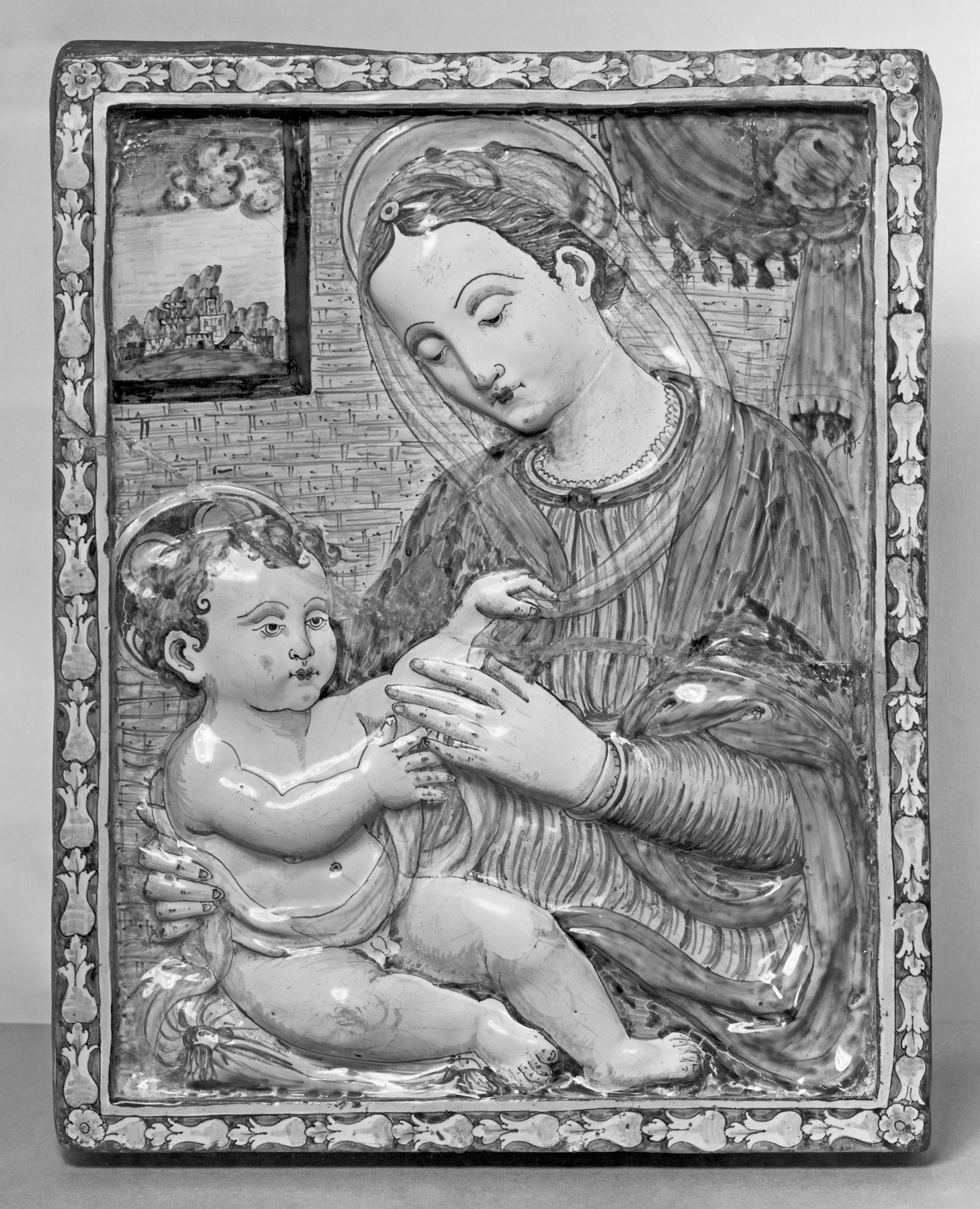Plaque with the Virgin and Child
(Renaissance Europe )
Plaques portraying the Virgin and Child comprised a common, relatively inexpensive form of Christian art that was displayed in the entry way of many homes in central Italy during the Renaissance period. Christians revered the Virgin as an intercessor with Christ, protecting the house and all who entered it. This plaque shows the Virgin with an infant Christ seated on her lap, an especially beloved image of motherly love extended by the Queen of Heaven to all her devotees. A border with a flower design frames the two figures on all four sides. To the rear of the figures, a window looks out onto a town, adding to the sense that the experience of the Virgin is part of the viewer’s own world. Maiolica painters often adopted imagery from other paintings and sculptures, and this plaque’s composition was based on a marble relief by the Florentine sculptor Benedetto da Maiano (1442-1497) of which the version in the Metropolitan Museum of art (41.190.137) is accepted as the original. The technique of making clay reliefs from a mold permitted a quick production of a number of plaques to satisfy a broad public. This plaque is painted in two shades of grayish-blue, yellow, dark ochre, copper-green, and manganese. For more information on “maiolica,” see 48.1336.
Provenance
Provenance (from the French provenir, 'to come from/forth') is the chronology of the ownership, custody, or location of a historical object. Learn more about provenance at the Walters.
Don Marcello Massarenti Collection, Rome [no. 410]; Henry Walters, Baltimore, 1902 [mode of acquisition unknown]; Walters Art Museum, 1931, by bequest.
Geographies
Italy, Deruta (Place of Origin)
Measurements
17 1/2 x 13 3/4 in. (44.5 x 35 cm)
Credit Line
Acquired by Henry Walters, 1908
Location in Museum
Accession Number
In libraries, galleries, museums, and archives, an accession number is a unique identifier assigned to each object in the collection.
In libraries, galleries, museums, and archives, an accession number is a unique identifier assigned to each object in the collection.
48.1315


